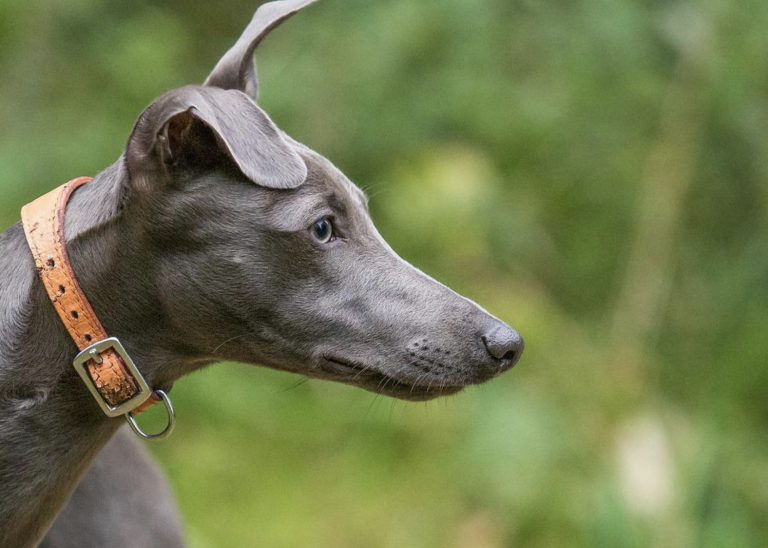What is dog prey drive? Well, sometimes we call it prey chase drive, or predatory chase drive. In any case, it is an overwhelming desire to chase things. This can include other dogs, small furry animals, cars, bikes, and anything in between.
The movement of the prey triggers the dog to chase even more. It is a reflex, a natural instinct, a normal dog behavior. Now, some breeds have a higher predatory chase drive than others. This includes groups of working dogs, hunting dogs, and herding breeds. For example, I can tell you a Jack russell terrier is a high prey drive dog. Milo just wants to chase anything small that moves.
Now, let’s talk about how you can tame prey drive in a dog.
Why do you need to tame it in the first place?
Why do you want to handle your dog’s prey drive? Well, while it is a natural behavior, one that dates back to a dog’s wolf ancestry, it might be problematic. Chasing is fun. But that behavior can go from fun to dangerous in a moment.
For example, if your dog’s prey drive becomes too high, your dog can display inappropriate behavior. Some of the negative effects of predatory chase drive include:
- Chasing, hunting, and probably even killing small animals and cats
- Stalking other animals
- Fixating on other animals
- Chasing cars, bikes, and other moving objects
- Inability to focus on anything but moving things
Not to mention, that prey drive can make your dog fixated, and even put him in a dangerous situation. Like crossing the street and chasing another animal. Or a cat turning back to your dog and scratching it.
Why does your dog have a high prey drive?
Predation is an instinctive behavior. It is an instinct, natural behavior that is found in all dogs to a certain extent.
It is originally a hunting skill, developed particularly for hounds, terriers, sporting dogs, and herding dog breeds.
Some dogs have a higher prey drive, others do not. Some dogs even live purely for the thrill of the chase. Others want to catch and kill their target.
Animal behavioralist professionals explain predation as a “behavior chain consisting of several parts that merge into each other and that are intrinsically reinforcing your dog. They include orientation in the environment, stalking, creeping towards prey, chasing, grab-biting, possessing, dissecting, and consuming”.
Here are some behaviors associated with prey drive in puppies:
- Hunting
- Chasing
- Stalking
- Searching
- Biting to grab or kill
For any dog, prey can take many different forms. It can be leaves, sticks, toys, balls, and small animals. If left to its own, a dog with a high prey drive can become prone to chasing anything that moves.
What can you do?
We will talk about three things you can do to tame the prey drive of your puppy. Let’s start with what professionals call correcting a behavior. It is essential part of dog training.
If you have a hound dog or any other dog with a strong prey drive, you can expect genetics to kick in. But you have to react when that happens.
One thing you can do is the following. Physically step in front of him and block his view. If you have a good relationship and bond, at this point your dog should sit calmly.
Now, to break that fixation and prevent a chase, simply change the direction. Practice this with a loose leash before you move to off-leash situations. Set up the boundary at the right distance.
Once there is no more fixation on the prey (be it a cat, squirrel, another dog, or anything else), and your dog is following you, mark and reward. Lure your dog into focusing on you. Make sure to always handle sudden situations when genetics kick in and you have a dog with prey drive instinct.
The Chase Up Game
Another thing you can do to tame your dogs prey drive is to play a game. Dogs love playing games, and they learn even more.
I’ve talked about the chase up game before. Basically, you make yourself the target of your dog’s chase.
Or in other words, you give your dog a target for chasing. He can chase only you. What does this do? Well, for starters, it makes your dog focus on you. He is fixated on you, and he will follow you anywhere you go.
But more importantly, it reduces the chances of your dog chasing after another small animal or anything that moves.
Leave it command
The leave it command is a great way to handle prey drive instinct in your dog. It will make your pet stop chasing.
But how do you teach it? Here is a step-by-step guide you can use.
- Start by putting a treat on the floor
- Tell your dog to leave it and wait for your dog to have eye contact with you
- If your puppy tries to get the treat, cover it with your foot
- When your dog looks away from the treat and leaves it alone, mark with “yes” and reward with a different treat
- Practice without distractions in the beginning, and then move up to a more challenging environment
- As you are increasing the difficulty of the exercise, increase the value of the treat
- You can practice with toys, food, and even yourself or any other family member
Punishment is not the solution
I have talked about this over and over again, punishment is never the solution.
Why? Because punishment is not sufficient. It merely teaches your puppy that it cannot do something while you are around. Who is to say your dog will not chase things when you are not paying attention?
Yes, you can correct a behavior, as we said before. You can do a little leash jerk and pull your dog in the opposite direction. But you should never, I repeat, NEVER, use shock collars and electric fences. They might be common tools to curb predatory behavior, but there are so many things that can go wrong when working with such a punishment.
If you do not punish your puppy at the exact second, you are inflicting fear and pain on something your dog hasn’t done. If misused, these types of correcting tools can cause long-term trauma, aggression, and even reduce the trust your puppy has in you.
Why inflict pain, when there are less invasive forms of training available?







